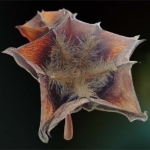
I am a book of snow,
a spacious hand,
an open meadow,
a circle that waits,
I belong to the earth
and its winter.
Pablo Neruda
As the peaks and valleys of 2021 recede in the rear-view mirror, we’d like to express our absolute appreciation to our dear readers for making room for Wild & Wondrous in the space in between. Whether you’re a regular visitor or just passing through on your internet travels, we’re glad to have you with us as we explore the wonders of the natural world.
With your support of the Favorite World Press read-and-plant partnership, you’ve helped create a more sustainable future by empowering us to plant trees that nurture our planet. Trees that turn down the heat, purify air and water and provide habitat for our furry and feathered friends. Well done, and thanks very much, tree people!
In 2022, we’ll be focusing more of our efforts on a new sustainable development project also aimed at protecting and preserving the world’s remaining forests and biodiversity.
Wild & Wondrous will be back with more creatures to meet, things to learn, and things to do. Until we meet again, wishing you a healthy, happy, light-filled New Year, chock-full of leaps from peak to peak.
xo Favorite World Press
The W & W
60-second
Year in Rear-View
Networking giraffes,
your fair share of trees,
a snowy owl in the city,
plastic-free seas
Moths that jam sonar,
a blue bird that trills,
leafy seadragons
flaunting their frills
The rarest of rhinos,
chimps that have heart,
the plight of the manatee,
urban bird art
Tree-planting readers
putting down roots,
wild African horses
in bug-zapping suits
Big bison feelings,
a yard habitat,
the return of cicadas,
an award-winning bat
Night lights for lions,
blinking bug love,
bird feeder smack-downs
won by a dove
A headcount for walrus,
disease-busting bees,
traveling wildebeest,
fish that don’t freeze
A shout-out for science,
the songs of the Earth,
a month celebrating
what the planet is worth
Running for wildlife,
how whales keep us cool,
movie star bees,
why brainy girls rule
A hairy-nosed wombat,
the last bird of its kind,
a plan to save forests
to restore peace of mind
A remembrance of sorrow,
the pure magic of snow,
hope for our oceans,
a sea creature’s glow
The prettiest pictures,
lunar fox feet,
reducing emissions
to turn down the heat
Bringing back monarchs,
green roofs for birds,
a big meeting in Scotland
where they said lots of words
A built-in eye compass,
how mollusks got clever,
and gratitude for our readers
that goes on forever.






























































